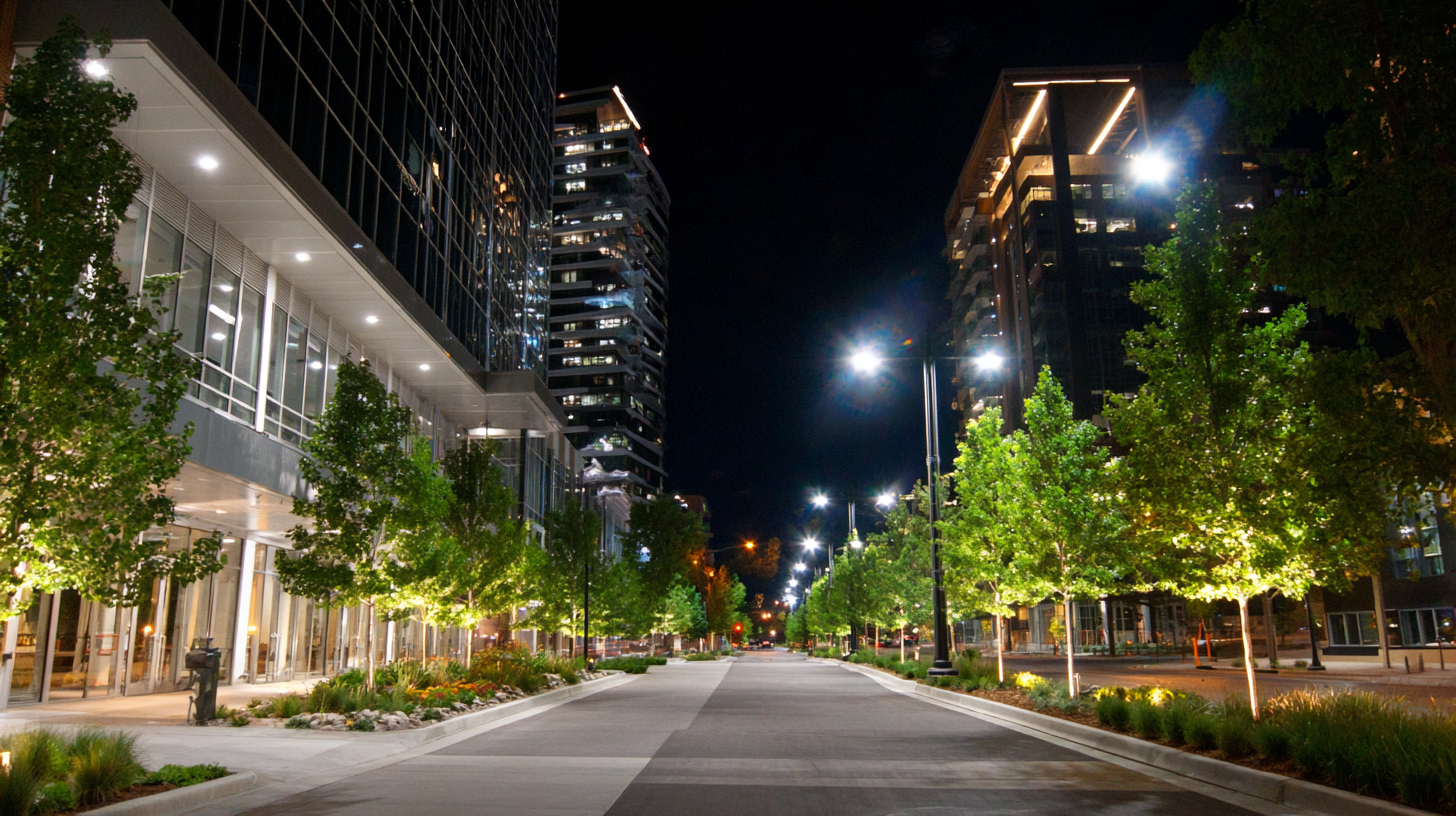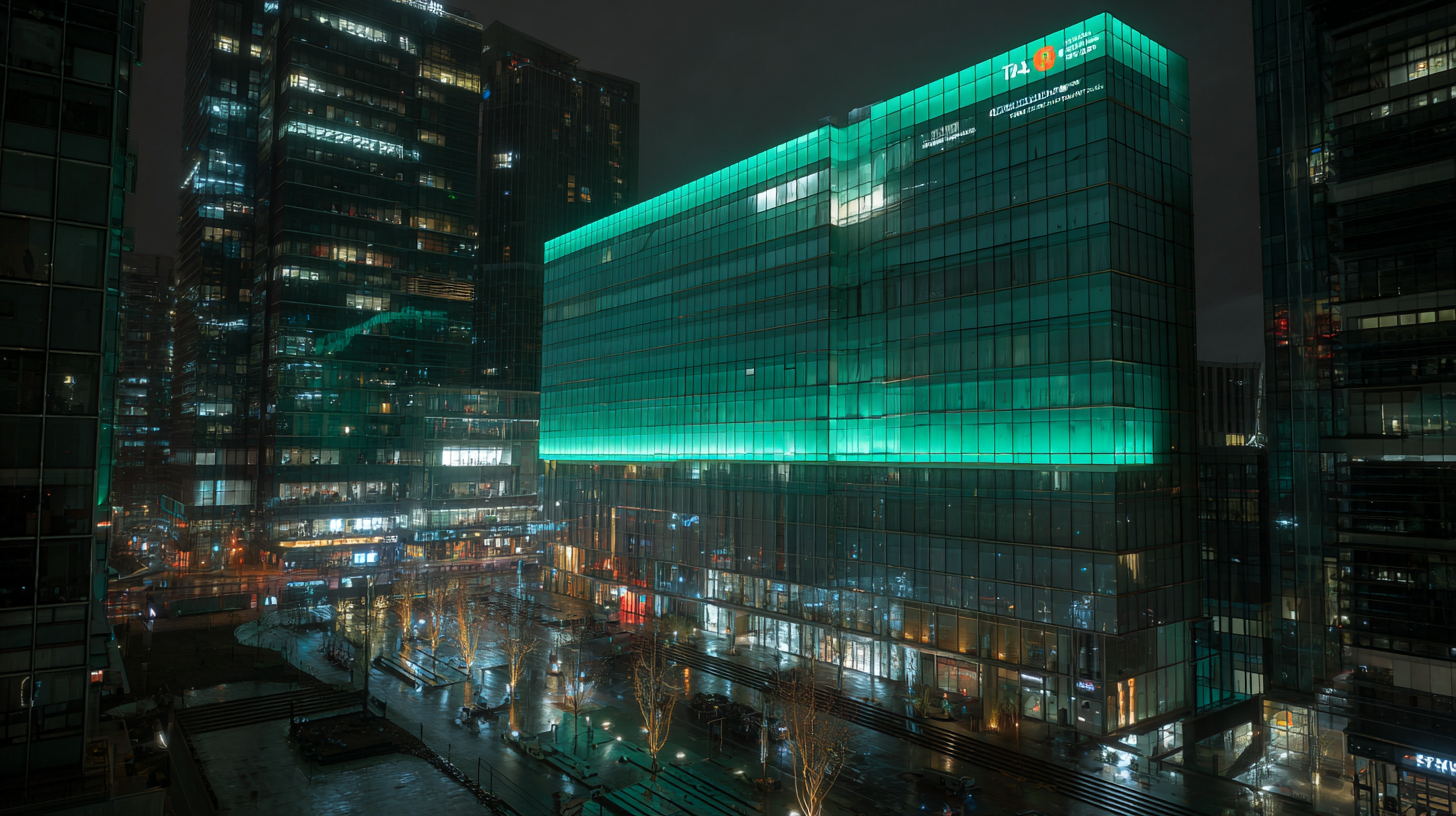7 Reasons Why Best Exterior Led Lighting is Essential for Sustainable Urban Development
In the era of rapid urbanization, the role of Exterior LED Lighting in sustainable urban development has never been more critical. According to a report by the International Energy Agency (IEA), lighting accounts for approximately 19% of global electricity consumption, with outdoor lighting contributing significantly to this figure. The shift towards energy-efficient exterior LED lighting is essential not only for reducing energy consumption, which is projected to save cities 50% of their lighting energy needs by 2030, but also for enhancing safety, aesthetics, and environmental sustainability in urban areas. Moreover, the adoption of smart exterior LED lighting systems can lead to a reduction in urban heat islands and improve the overall quality of life for residents. As cities strive to meet the challenges posed by climate change and increasing populations, investing in advanced exterior LED lighting technology emerges as a pivotal step toward achieving a sustainable future.

The Role of LED Lighting in Reducing Urban Energy Consumption by 30%
The push for sustainable urban development has made energy-efficient solutions more crucial than ever, with LED lighting emerging as a key player in reducing urban energy consumption. Studies show that adopting LED technology can lead to energy savings of up to 30%. Unlike traditional lighting methods, which waste energy through excess heat and inefficient lumens, LED lights provide targeted illumination while consuming significantly less power. This efficiency not only benefits the environment but also alleviates the financial burden on municipalities and taxpayers alike.
Moreover, LED lighting contributes to a smarter urban infrastructure. When integrated into smart city initiatives, these lights can be outfitted with sensors and control systems to manage energy use dynamically. For instance, adjustable brightness levels based on real-time lighting needs can drastically cut electricity costs. Furthermore, with longer lifespans and lower maintenance requirements, LED systems reduce waste and promote sustainability. By transitioning to LED lighting, cities are taking concrete steps toward a greener future, enhancing public spaces while significantly lowering their carbon footprint.
7 Reasons Why Best Exterior LED Lighting is Essential for Sustainable Urban Development
| Reason | Impact on Urban Development | Energy Savings (%) | Emissions Reduction (kg CO2) |
|---|---|---|---|
| Enhanced Safety | Improves visibility, reducing crime rates. | 20% | 5000 |
| Aesthetic Appeal | Enhances the beauty of urban environments. | 15% | 3000 |
| Long Lifespan | Reduces replacement costs and waste. | 25% | 4000 |
| Lower Energy Consumption | Significantly lowers energy bills. | 30% | 6000 |
| Smart Technology Integration | Supports smart city initiatives for efficiency. | 10% | 2000 |
| Improved Public Health | Better lighting encourages outdoor activity. | 12% | 2500 |
| Environmental Responsibility | Fulfills sustainability commitments. | 18% | 4500 |
Enhancing Urban Safety: Studies Show LED Lights Decrease Crime Rates by 20%
The use of LED lighting in urban environments plays a crucial role in enhancing public safety. Numerous studies have demonstrated a strong correlation between well-lit areas and reduced crime rates. For instance, research from the University of California, Berkeley, found that areas equipped with LED street lights experienced a significant decrease in crime, with reports indicating overall reductions of up to 20%. This drop in criminal activity can be attributed to the increased visibility that LED lights provide, which deters potential offenders who typically prefer poorly lit surroundings.
Moreover, a report by the National Institute of Justice highlights that better lighting can lead to safer neighborhoods. The report indicates that enhanced lighting not only prevents crime but also promotes community engagement and a sense of security among residents. LED technology contributes not only to these outcomes but also to sustainability, providing long-lasting and energy-efficient lighting solutions. As cities strive to create safer and more vibrant urban spaces, investing in LED lighting emerges as a vital strategy for sustainable urban development and the overall enhancement of community safety.
Promoting Biodiversity: How LED Lighting Supports Urban Ecosystems
Urban ecosystems play a crucial role in promoting biodiversity, and LED lighting is vital in supporting these environments. According to recent studies, the implementation of smart lighting technologies, such as adaptive LED systems, can reduce light pollution, which is instrumental for nocturnal wildlife. A report from the IPBES highlights that artificial light at night significantly affects avian species, disrupting their feeding and nesting behaviors. By utilizing energy-efficient LED lighting, cities can create safer nocturnal environments that enhance urban ecological resilience while minimizing human impact on wildlife.
Moreover, the integration of LED lighting in urban green spaces can optimize the provision of ecosystem services. Research indicates that well-lit parks and natural habitats encourage biodiversity by attracting a variety of species, fostering an urban landscape where flora and fauna can thrive. Cities that adopt sustainable lighting solutions enhance both their aesthetic appeal and ecological health, effectively addressing the challenges of urbanization. This holistic approach, as endorsed by the post-2020 Global Biodiversity Framework, emphasizes the need for a collaborative effort across all sectors to champion biodiversity and sustainable practices in urban development.
The Economic Benefits: LED Lighting Can Save Cities Up to $2 Billion Annually
The economic advantages of adopting LED lighting in urban areas cannot be overstated. Cities can save up to $2 billion annually by transitioning to this energy-efficient technology. Given the alarming rate of light pollution, which not only wastes energy and money but also poses threats to our climate, the case for LED lighting strengthens further. By reducing unnecessary lighting, cities can lower their electricity bills and reallocate these funds towards critical services, enhancing overall community well-being.

For municipalities considering this transition, here are a couple of tips: First, evaluate current lighting needs and identify areas where excessive illumination occurs. Focus on installing LED lights in these spots to maximize savings. Secondly, invest in smart lighting solutions that adjust brightness based on usage patterns; this flexibility can yield significant financial benefits over time. By implementing these strategies, cities can create a more sustainable and economically viable future while preserving the beauty of night skies for generations to come.
Smart Cities: Integrating LED Technology with IoT for Sustainable Urban Development
The integration of LED technology with IoT is transforming urban landscapes, making smart cities a cornerstone of sustainable development. The global smart city market is projected to expand dramatically, growing from $767.75 billion in 2024 to $4.64763 trillion by 2032, with a remarkable compound annual growth rate (CAGR) of 25.2%. This surge underscores the increasing reliance on innovative solutions, such as LED lighting, that not only enhance urban aesthetics but also improve energy efficiency and operational effectiveness.

The smart lighting segment, a critical component of this trend, is expected to reach approximately $16.17 billion in 2023, with a projected CAGR of 16.52% from 2024 to 2031. This growth is fueled by ongoing advancements in lighting technology and the push for sustainable urban solutions. With smart lighting systems, cities can leverage IoT connectivity to optimize energy consumption, reduce operating costs, and enhance public safety. As lighting becomes more intelligent, the potential for data-driven urban management expands, paving the way for more resilient and environmentally friendly cities.
